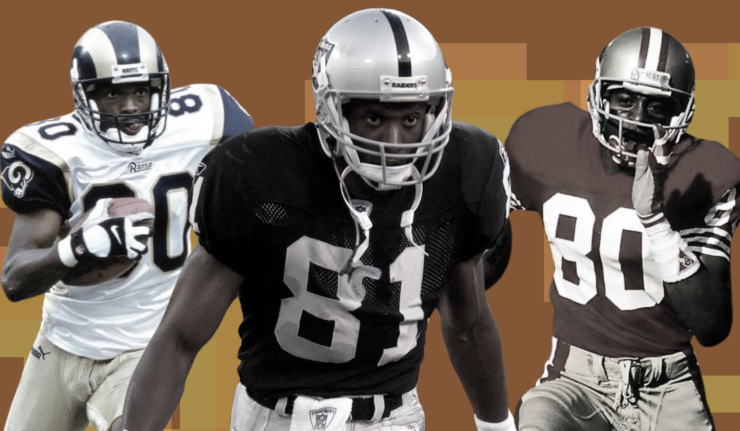The 1990s marked a pivotal shift in the NFL. While running backs had long reigned supreme, the seeds of a passing revolution, sown by Bill Walsh’s “West Coast” offense, began to sprout and flourish. Quarterbacks started putting up astronomical numbers, and wide receivers, once supporting players, ascended to superstardom. This decade witnessed the rise of true receiving titans, players whose talent and impact redefined the position. Here’s a look at some of the best wide receivers who dominated the 1990s:
1. Jerry Rice: It’s impossible to discuss 90s receivers without starting with Jerry Rice. His peak, while arguably established in the 80s, extended well into this decade. Rice’s unparalleled work ethic, route running precision, and sure hands made him a nightmare for defenses. While his raw athleticism may have slightly waned, his mastery of the craft only deepened. He led the league in receiving yards six times in the 90s, consistently surpassing 1,000 yards per season. His Super Bowl XXIII MVP performance, coupled with numerous other accolades, solidified his place as arguably the greatest receiver of all time. Rice wasn’t just a receiver; he was an institution.
2. Cris Carter: Carter’s story is one of redemption and remarkable consistency. After early career struggles, he found a home in Minnesota, where he became a touchdown machine. His exceptional hands, contested catch ability, and red-zone prowess made him a quarterback’s best friend. Carter consistently posted double-digit touchdowns and over 1,000 receiving yards throughout the 90s. His precise route running and understanding of defensive coverages allowed him to consistently find the soft spots in defenses. Carter’s impact transcended statistics; he was a leader and a role model, demonstrating the power of perseverance.
3. Michael Irvin: “The Playmaker” brought a swagger and physicality to the wide receiver position. Irvin was a key component of the Dallas Cowboys’ offensive juggernaut in the early-to-mid 90s. His size, strength, and exceptional leaping ability made him a matchup nightmare. He thrived in the Cowboys’ high-powered offense, regularly eclipsing 1,000 receiving yards and finding the endzone. Irvin’s on-field intensity and off-field personality made him a polarizing figure, but his talent was undeniable.
4. Andre Reed: A consistent and reliable target for Jim Kelly in Buffalo’s “K-Gun” offense, Reed was a crucial part of the Bills’ four consecutive Super Bowl appearances. While he may not have possessed the same flash as some other receivers on this list, Reed’s dependability and toughness were invaluable. He consistently moved the chains, made tough catches in traffic, and was a key contributor to the Bills’ offensive success. Reed exemplified the value of a possession receiver who could be counted on in crucial situations.
5. Tim Brown: Brown was a consistent performer for the Oakland Raiders throughout the 90s. He was a versatile receiver who could line up in the slot or on the outside, and he was a dangerous return specialist as well. Brown’s speed and agility made him a threat to score every time he touched the ball. He regularly surpassed 1,000 receiving yards and was a consistent Pro Bowl selection. Brown’s longevity and consistent production solidified his place among the top receivers of the decade.
6. Isaac Bruce: Bruce emerged as a star receiver for the St. Louis Rams in the late 90s, forming a dynamic duo with quarterback Kurt Warner during the “Greatest Show on Turf” era. His smooth route running, excellent hands, and ability to make big plays downfield made him a key component of the Rams’ explosive offense. Bruce’s contributions were essential to the Rams’ Super Bowl XXXIV victory.
7. Wayne Chrebet: Chrebet, an undrafted free agent, became a fan favorite with the New York Jets. His gritty play, reliable hands, and knack for making clutch catches earned him the nickname “Mr. Clutch.” While he may not have possessed the same physical gifts as some other receivers on this list, Chrebet’s determination and work ethic made him a valuable asset to the Jets’ offense.
The rise of these receivers mirrored the NFL’s transformation into a passing league. The influence of the West Coast offense, with its emphasis on short, precise passes, opened up the passing game and created opportunities for receivers to thrive. Rule changes that favored the passing game also contributed to this shift. The 1990s weren’t just a decade; they were a turning point, ushering in an era where quarterbacks and wide receivers became the faces of the league, forever changing the landscape of professional football.

